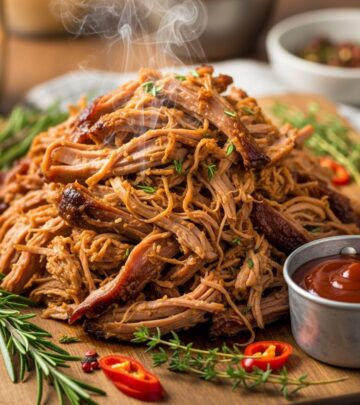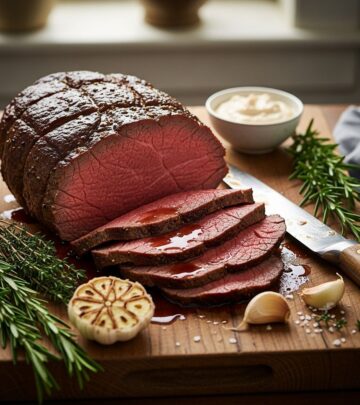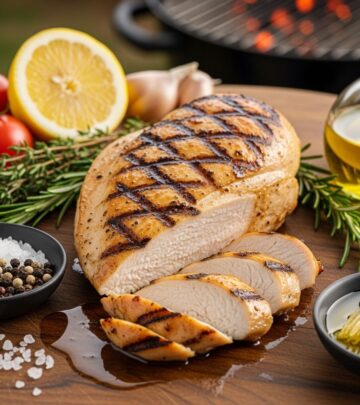The Safest and Fastest Way to Dice an Onion: Essential Knife Skills
Gain kitchen confidence with smooth, precise cuts and hand protection every time.

Onion dicing is a foundational kitchen skill, vital for countless recipes and daily cooking tasks. While onions may seem simple, mastering the safest and fastest way to dice them will boost your culinary efficiency, reduce food waste, and protect your fingers—especially if you follow proven techniques favored by professionals. This guide covers the science of onion structure, safety tips, essential steps, knife selection, flavor impact, troubleshooting, and expert advice.
Why Knife Skills Matter: The Onion Dicing Challenge
Dicing onions is more than a basic chopping task—it’s a fundamental culinary technique. Achieving uniform pieces improves both the consistency and texture of your dishes. More importantly, executing proper dicing techniques dramatically increases kitchen safety and speed. Onions have a slippery texture and layered structure that makes them tricky to handle, especially for beginners. The skills and sequence outlined here not only minimize the risk of injury but also help maintain onion integrity and flavor.
Understanding the Onion’s Anatomy
Onions consist of concentric layers held together at the root and stem ends. The root end is slightly flattened with stringy filaments, while the stem end is the pointy shoot where green growth may emerge. Keeping the root intact during dicing is essential for holding the layers together as you work. This structural knowledge will guide your cuts for maximum efficiency and minimal mess.
Step-by-Step Guide: The Safest Way to Dice an Onion
- Trim Only the Stem End
Begin by removing the shoot (stem) end with a sharp chef’s knife or santoku. Leave the root end intact—this holds the onion together and reduces slipping while cutting.
After mastering the dicing technique, consider adding a delicious twist to your meals. Check out our fastest way to pickle onions guide for a quick and flavorful recipe that will elevate your dishes and preserve onions perfectly. - Slice the Onion in Half
Place the onion on its side. With your palm on top, slice directly through the axis, creating two symmetrical halves. This exposes the layers for dicing and gives you stable surfaces.
- Peel the Outer Layers
Remove the thin, papery skins and any tough outer layer, which can be slippery and dull your knife.
If you're curious about how different onion varieties can enhance your culinary creations, delve into our in-depth comparison of shallots and onions. Discover when to use each type for optimal flavor and texture in your dishes. - Create Vertical Slices (Pole-to-Pole)
Position the onion half flat-side down. Use your fingers to anchor, curling your knuckles inward. Make vertical cuts from stem to root, spaced at your preferred dice size. Do not cut through the root—stop about 1/4-inch short to keep layers intact.
- Optional: Make Horizontal Cuts
Some chefs add one or two horizontal slices, parallel to the cutting board, before making vertical cuts. This step yields finer dice but requires extra care—keep your palm flat or fingertips stable on the onion.
- Dice Perpendicularly
Turn the onion and make perpendicular cuts (crosswise), slicing from stem end toward root. This yields even, consistent dices. As you approach the root end, rotate the onion onto its larger stable face and finish the remaining cuts.
Want to impress your guests with a stunning appetizer? Check out our homemade recipe for a crispy blooming onion, complete with a delicious dipping sauce that’s sure to be a crowd-pleaser. - Discard or Save the Root
Once all cuts are complete, you’ll be left with the root holding a small wedge of onion. Dispose, or if desired, dice carefully for minimal waste.
Key Safety Tips for Dicing Onions
- Use a sharp knife: Dull knives slip and increase risk of injury.
- Keep your fingertips curled (“claw grip”): Tuck your fingers, guiding the knife along your knuckles to avoid cuts.
- Anchor the onion: Always place the onion flat side down for maximum stability.
- Cut slowly and smoothly: Rushing increases mistakes and the chance of nicks.
- Stabilize with your palm or fingertips when making horizontal cuts.
- Clean up skins immediately: Onion skins are slippery and can complicate cutting.
Choosing the Right Knife for Onion Dicing
The type of knife you use plays a critical role in both safety and efficiency:
- Chef’s knife: The classic Western chef’s knife (8-10 inches) is ideal for most users. Use a slicing (back-and-forth) and chopping (up-and-down) motion.
- Santoku knife: The Japanese santoku is shorter and lighter, often used with a pulling/slicing or chopping motion. Easy to maneuver for smaller hands and more precise cuts.
- Paring knife: Useful for peeling but too small for efficient dicing.
Tip: Whichever knife you choose, ensure it’s well-sharpened and comfortably fits your hand.
Flavor Impact: Cut Direction Matters
The direction you cut an onion affects both texture and flavor release:
- Pole-to-pole (root to stem): Cuts rupture fewer cells, yielding a milder and sweeter flavor. The slivers retain crunch and minimize harsh aroma.
- Crosswise (equator/rings): Cuts through more cells, producing more pungency and a stronger onion aroma. Useful for dishes needing bold flavor.
| Direction | Resulting Flavor | Common Use |
|---|---|---|
| Pole-to-pole | Mild, sweet | Dicing, caramelizing, salads |
| Crosswise | Pungent, strong | Rings for burgers, frying |
Expert-Level Tips for Better Dicing
- Dice sizes matter: Smaller, uniform dice ensure even cooking and balanced flavor dispersion.
- Cut in batches: For larger amounts, halve multiple onions for consistency.
- Chill onions before dicing: Reduces eye irritation and slows pungency release.
- Wipe knife frequently: Onion residue can make the knife less effective.
- Use a large cutting board: Gives you ample workspace and helps prevent slips.
Troubleshooting Common Onion Dicing Mistakes
- Slippery onion layers: Dry your onion and hands, and ensure root end is left untrimmed until the end.
- Uneven dice: Be consistent with vertical and horizontal cuts. Practice makes perfect.
- Eye irritation: Try chilling onions, using a sharper knife, and minimizing cell rupture by cutting pole-to-pole.
- Messy cutting board: Clear away skins and scraps as you go to maintain safety and neatness.
FAQ: Frequently Asked Questions About Dicing Onions
Q: Why leave the root on?
A: The root end keeps onion layers together, reducing slippage and allowing faster, safer dicing.
Q: How do I prevent tears when dicing onions?
A: Minimize cell rupture by slicing pole-to-pole and chill the onion briefly. Good ventilation and a sharp knife also help.
Q: Do I need to make horizontal cuts?
A: Horizontal cuts yield finer dice but are optional. They require careful hand positioning for safety.
Q: What if my knife keeps sticking to onion slices?
A: Wipe the knife blade with a damp cloth periodically and ensure it is sharp.
Q: Is there a difference between yellow, red, and white onions for dicing?
A: Technique is the same, but yellow onions are firmer and hold shape better; reds may bleed color; whites are softer and can become mushy if over-diced.
Summary: Elevate Your Onion Dicing Skill
Dicing onions efficiently and safely is an essential skill for cooks of all levels, influencing the taste, presentation, and success of many dishes. By following a step-by-step strategy, respecting the onion’s structure, choosing the right knife, and mastering the nuances of cut direction, you empower yourself to prep like a professional—fast, safe, and with superior flavor control. Incorporate these techniques into your daily cooking routine for consistent results and kitchen confidence.
References
Read full bio of medha deb












